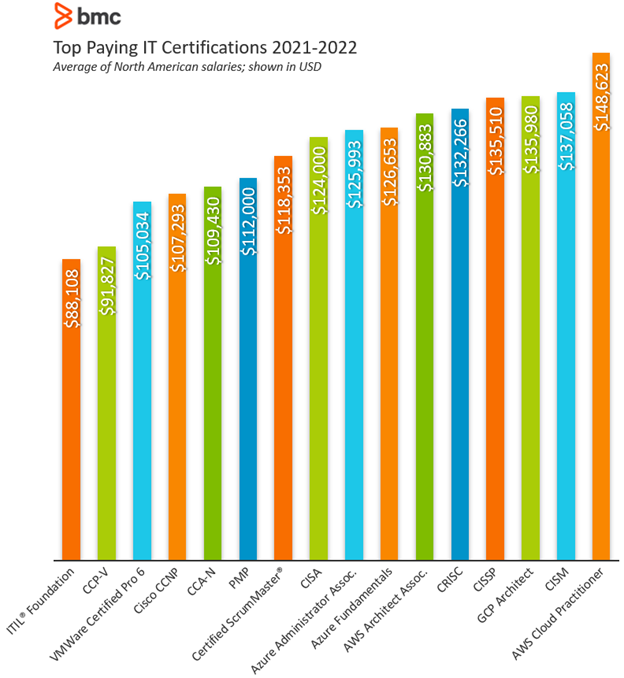To those who are not immersed in the complex and constantly evolving world of IT, many of the roles filled by tech experts might appear to be the same. However, as these positions become increasingly relevant for companies, it is crucial to understand the difference between jobs and why they might be needed.
In this article, we’re talking about the roles and responsibilities of system administrators and security administrators. Though the names and jobs are similar, there are distinct differences in these IT-focused administrator roles.
Terminology
System administrator is often shortened to the buzzy title of sysadmin. More formally, some companies refer to their sysadmin as a network and computer systems administrator.
A security administrator, on the other hand, can have several names, including security specialist, network security engineer, and information security analyst.
As always, the job title is less important than the specific roles and responsibilities that a company may expect from the position.
What’s a system administrator (sysadmin)?
Computer networks are crucial to business, and they require a dedicated employee or several employees to manage the day-to-day operations of the network. That’s where system administrators come in.
A system administrator—often shortened to sysadmin—is an IT professional who supports the computing environment of a company and ensures the continuous and optimal performance of its IT services and support systems. Sysadmins are essentially in charge of “keeping the lights on” for the organization, in turn limiting work disruptions.
Roles & responsibilities
As their responsibilities focus on daily network operations, system administrators are charged with a wide swath of computer work: organizing, installing, and supporting the computer systems, which can include local area networks (LANs), wide area networks (WANs), network segments, intranets, and other data communication systems.
Several metrics—like uptime, performance, resources, and security—can help a sysadmin determine that the system meets the users’ needs within the company’s budget.
Responsibilities of a system administrator may include:
- Anticipating needs of the network and computer systems before setting it up
- Installing network hardware and software
- Ensuring and implementing upgrades and repairs in a timely manner
- Maintaining network and computer system security
- Understanding and solving problems as automated alerts occur
- Collecting data to help evaluate and optimize performance
- Adding and assigning users and network permissions, as determined by the organization
- Training users in proper use of hardware and software
Peers & reporting
A system administrator likely reports to an IT department head.
Unlike some IT positions, sysadmins have a unique responsibility to communicate and problem solve with colleagues both within and beyond the IT team. Because a sysadmin solves problems for and trains all users, including non-IT employees, communication is imperative.
System administrator job skills
In terms of skills needed, sysadmins need to know a little bit of everything. Beyond formal education, strong system administrators will need to possess several vital skills, including analytical, communication, multitasking, and problem-solving skills.
System administrators must also have skills such as:
- Leadership abilities
- Hardware knowledge
- Strong management skills
- Attention to detail
- Critical thinking
- Basic programming skills
Education & requirements
Some businesses may require that a system administrator hold a BS in a computer-related field, though some companies may only require a post-secondary degree.
Specific training and certifications alongside hands-on experience can strengthen a candidate’s position, especially when he or she hasn’t earned a BS. Common training and certifications for system administrators are offered by Microsoft and Cisco, including the Microsoft Certified: Azure Administrator Associate and the Cisco Certified Network Associate (CCNA) certification.
Outlook
The Bureau of Labor Statistics (BLS) projects that the employment of system administrators will grow by 5% by 2030–a rate that is slower than the average growth rate across all national occupations.
Despite this limited growth, it is still estimated that there will be close to 25,000 job openings a year for network and computer systems administrators. It is also projected that the demand for IT workers should continue to grow as companies invest in newer, faster, and more advanced technology.
The median annual wage for network and computer systems administrators was $84,810 in May 2020.

What is a security administrator?
The information stored within computers and infrastructure is crucial to business. In turn, security is of the utmost importance—particularly today, when individuals and sovereign nations threaten cybersecurity attacks. Security administrators are employees who test, protect, and ensure the hardware, software, and the data within the computer networks, is secure.
A security administrator is the lead point person for the cybersecurity team. They are typically responsible for the entire system and ensure that it is defended as a whole. They will often install, administer, and troubleshoot an organization’s security solutions, and then make certain it is kept secure from any type of outside, or inside, threat.
Roles & responsibilities
Where a system administrator knows a lot about many sectors of IT, a security administrator specializes in the security of the computers and networks.
In general, computer security, also known as IT security or cyber security, includes protecting computer systems and networks from the theft and/or damage to hardware, software, or information. It also includes preventing disruption or misdirection of these services. This should include knowledge of specific security devices, like firewalls, Bluetooth, Wi-Fi, and the IoT. This also includes general security measures and an ability to stay abreast of new security sector developments.
Specific roles and responsibilities of a security administrator may include:
- Monitoring networks for security breaches, investing violations as occurs
- Developing and supporting organizational security standards, best practices, preventative measures, and disaster recovery plans
- Conducting penetration tests (simulating cyberattacks to find vulnerabilities before others can find them)
- Reporting on security breaches to users, as necessary, and to upper management
- Implementing and updating software to protect information
- Staying up to date on IT security trends and information
- Recommending security enhancements to management and C-suite executives
Peers & reporting
Due to the necessity of network and data security, security administrators often report directly to upper management, which could be a CIO or CTO.
Security administrators frequently partner with sysadmins for implementing new changes to the network for security purposes.
Education & requirements
At a minimum, security administrators are expected to hold a BS in computer science, programming, or a similar field. Some companies prefer to hire candidates that hold a MS in computer systems or an MBA in information systems.
In addition, companies frequently prefer candidates who are certified in specific security fields. A common certificate is the Certified Information Systems Security Professional (CISSP), offered by the International Information Systems Security Certification Consortium (ISC)². The CISSP is one of the most sought-after cybersecurity certifications and it is designed to prove the candidate’s deep expertise in the field.
Other top cybersecurity certifications focus on more specific areas, such as systems auditing or penetration testing.
Security administrator job skills
Work skills are just as important as formal education for the role of a security administrator. Candidates should be detail-oriented and analytical, as security vulnerabilities are often tiny, hard-to-notice parts of the program or network. Problem-solving and communication skills are necessary, as well, especially when training or helping non-IT colleagues.
It is also important for security administrators to have:
- Strong leadership capabilities
- Technical expertise and experience with the ability to develop a security plan, coordinate and implement it, and monitor the IT environment
- A dedication to a collaborative approach and mindset
- An understanding of regulatory standards and how to ensure the business achieves compliance
Outlook
The BLS anticipates a significant growth in the security administrator role, predicting employment will expand by 33% by 2030. This growth rate is much faster than the average for all occupations nationwide, which are currently sitting at a growth rate of 8% from 2020 to 2030.
As our economy relies more on hardware, software, and information, the need to protect them grows exponentially. With this, the need for security analysts and administrators will continue to be extremely high. As cyberattacks grow in frequency and complexity, it will be crucial that these professionals be able to come up with innovative and effective solutions.
The median annual wage for information security analysts was $103,590 in May 2020.
Security vs system administrators: Both critical
Whether you are a company looking for assistance with IT and security, or you are looking for a new role, understanding the difference between system administrators and security administrators can be an important factor in ensuring all company needs are being met. The future of these jobs is secure, and the need for strong IT professionals will only continue to grow.







